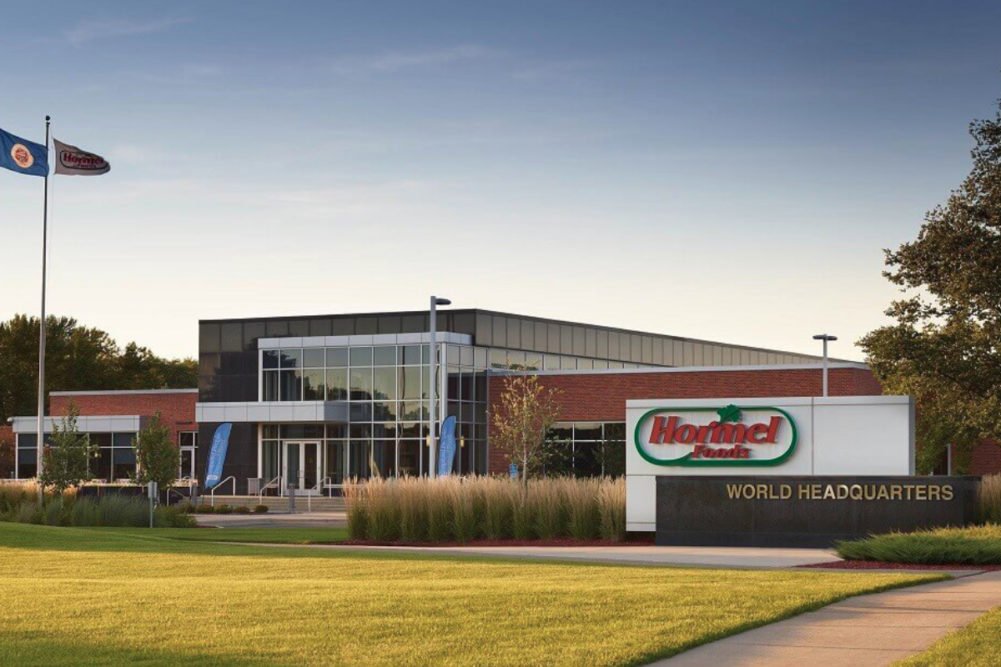AUSTIN, MINN. – A tight labor market was a boon and a bane for Hormel Foods Corp. during the third quarter of fiscal 2021. On the positive side, the company’s foodservice strategy is proving successful as operators seek to do more with fewer people. On the negative side, a shortage of workers prevented Hormel Foods from meeting demand in some product categories.
“For the quarter, we saw an acceleration in our foodservice business as sales grew 45% compared to last year,” said James P. Snee, chairman, president and chief executive officer, during a Sept. 2 earnings call to discuss third-quarter results. “What is even more impressive is sales increased 17% compared to 2019 pre-pandemic levels.
“Our enterprise foodservice portfolio remains perfectly positioned to meet the most pressing need of today’s foodservice operators, which is labor. Our products minimize labor, simplify food preparation and save time all while preserving the flexibility to add their own unique touch to their menus.”
Net income for the quarter ended July 25 was $177 million, equal to 33¢ per share on the common stock, and down from the previous year when the company earned $203 million, or 38¢ per share.
Sales for the quarter rose sharply to $2.86 billion from $2.38 billion the year prior.
Hormel Foods’ earnings were pressured by rising input costs related to raw materials, freight, supplies and labor. Most notably high hog prices reverberated throughout the company’s product portfolio.
“Hog prices were up 250% compared to 20-year lows last year,” said James N. Sheehan, chief financial officer. “Additionally, the prices of pork remained elevated, caused by the recovery in the foodservice and the strong worldwide demand. The USDA composite cutout was up 50% compared to last year and 20% compared to the second quarter. Trim and belly prices also experienced inflationary pressure with significant volatility. Compared to the prior year, belly prices were 62% higher and trim prices were 27% higher.”
The sales surge was attributed to consumer demand across the company’s portfolio as sales rose in all four business units, pricing actions on almost every brand, and several weeks operating the recently acquired Planters business.
“Now more than ever, our investments across all areas of our business are paying off and have allowed us to reach even more consumers when and where they are eating,” Mr. Snee said. “Whether it is cooking a meal at home, snacking at work, eating at a local restaurant, hosting a gathering with family and friends or ordering food online, a Hormel Foods branded product will likely be an option. The proof is in our performance this quarter.”
Hormel Foods’ gross margin fell during the quarter.
“The pressure on the gross margin really relates to the labor shortages, not only labor shortages at our facilities but labor shortages throughout the supply chain,” Mr. Sheehan said. “At times, we've had lines that have not been running at full capacity that have created some overheads because we've had shortages in our plants. At other times, we've been notified, let's say, relatively late that our suppliers could not provide us either packaging or input into our products.
“So, as we look at the third quarter and as we look forward, really, inflation, we think we've managed very well. It's this labor issue that is creating the pressure right now.”
Management is guiding full-year sales will be between $11 billion and $11.2 billion, and that diluted earnings per share will fall in a range between $1.65 and $1.69.
“This guidance reflects the addition of the Planters business and includes the associated onetime transaction costs and accounting adjustments in addition to the impact from inflationary pressures on our business,” Mr. Snee said. “We expect a strong finish to the year as pricing actions continue to take effect, the foodservice industry continues to recover and from the addition of Planters.”






